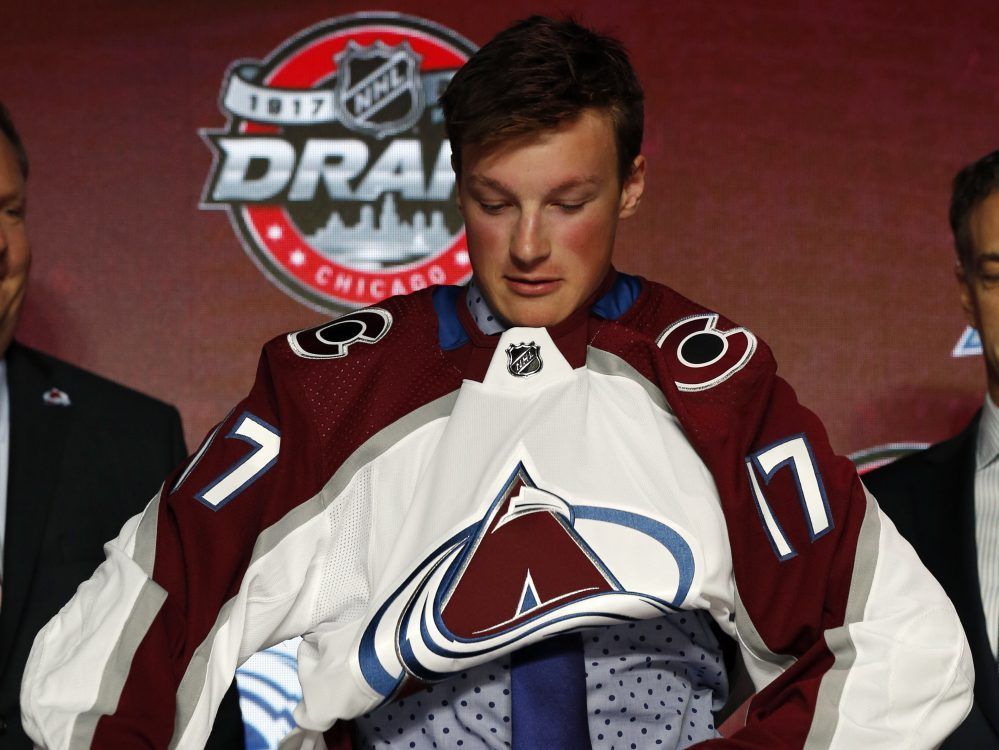Small man’s game: For once, size is out and speed is in at Canada’s world junior camp

ST. CATHARINES, Ont. — It’s probably an over-exaggeration to suggest that if Cale Makar had been trying out for Canada’s world junior hockey team 10 years ago, the 5-foot-10 and 175-pound defenceman wouldn’t have lasted past the first day of cuts.
After all, Ryan Ellis was the same size and he played in three straight tournaments from 2009 to 2011. The difference is that Ellis actually looked really small at the time. Even as a 19-year-old veteran, he always seemed more like someone’s kid brother than someone who ended up making the all-star team.
This year, it’s the opposite.
At a selection camp full of Lilliputian defencemen — three are three who are 5-foot-10 and six others are 6-foot-1 or shorter — it’s 6-foot-4 Cal Foote and 6-foot-7 Logan Stanley who stick out.
Makar, meanwhile, has become the new norm.
“I feel like the game’s going more towards speed and hockey sense, and whether you’re a big guy or a small guy, you have to adapt to the changes of the game,” said Makar, whom the Colorado Avalanche selected fourth overall in this year’s NHL Entry Draft. “Smaller and speedier guys are getting integrated on the backend in the game, which is pretty cool for me. We’ll see where the game goes, but I feel like a lot of it’s turning into speed and skill from the backend.
“I think speed’s going to be a big thing for the team this year, whether I make it or not.”
The roster hasn’t been set, but even if an oak tree like Stanley ends up making the final cut, this should be one of the smaller teams Canada has put together. Consider it a sign of the times. We’re long past the days when the boys in red-white-and-black would intimidate the opposition with their physicality.
Now, it’s about speed and skill — and Smurf-sized players who can intimidate the opposition with their ability to join the attack.
“I think times are changing with how hockey is being played,” said 6-foot-1 defenceman Dante Fabbro. “You look at last year (in the NHL) and all the top scorers were under six feet tall. With defencemen in the NHL like (Boston’s Torey) Krug and Ellis, you kind of start to see the trend changing with smaller defencemen.”
Just as Johnny Gaudreau did for undersized forwards, Makar could become the poster boy for pint-sized defenders. The 19-year-old is a game-changer. Scouts have compared him to Erik Karlsson because of his ability to join the rush and essentially become a fourth forward.
Last season in the Alberta Junior Hockey League, he finished sixth in scoring with 75 points in 54 games — 23 more than the next-highest defenceman. As a freshman for UMass-Amherst, he leads defencemen on his team with nine points in 16 games.
“Right away, everyone notices his skating and his deceptiveness on the ice,” Fabbro said of Makar. “It’s a big reason why he’s here. He’s obviously a really good puck mover.”
Still, Makar has his limitations. He’s not Dion Phaneuf in that he’s going to catch any opponent with his head down. And against a bigger, physical team, his lack of size could be a disadvantage — something he learned the hard way earlier this year when making the transition to the NCAA.
“Guys are on you right away,” said Makar, who took his lumps in a physical game against Providence College. “They’re just a very hard-working team and they chip-and-chase and they’re on you right away. I think just going back on pucks, you’re going to get hit all the time if you’re not able to avoid it.”
It was the challenge of playing against bigger and older opponents — as well as a greater emphasis on off-ice training versus games — that led Makar to the NCAA rather than play major junior in Canada. He’s already noticed benefits. He’s added more muscle from the start of the year, something he hopes will help him at the world juniors and beyond.
The only question is whether Canada, a country whose hockey identity is built on playing with heart and physicality, can win with a group of players who would get picked last in a game of basketball. According to head coach Dominique Ducharme, the answer is yes — to an extent.
“If you’re small and you don’t skate, that might be a problem,” said Ducharme. “The guys that we might consider to be a little bit smaller, they’re moving. It’s a question of balance at one point, too. It’s something that we look at and we talk about building the best team possible. We’re looking at combinations and groups of guys on defence and at forward, and the same thing in net.”
• Email: mtraikos@postmedia.com | Twitter: @michael_traikos





